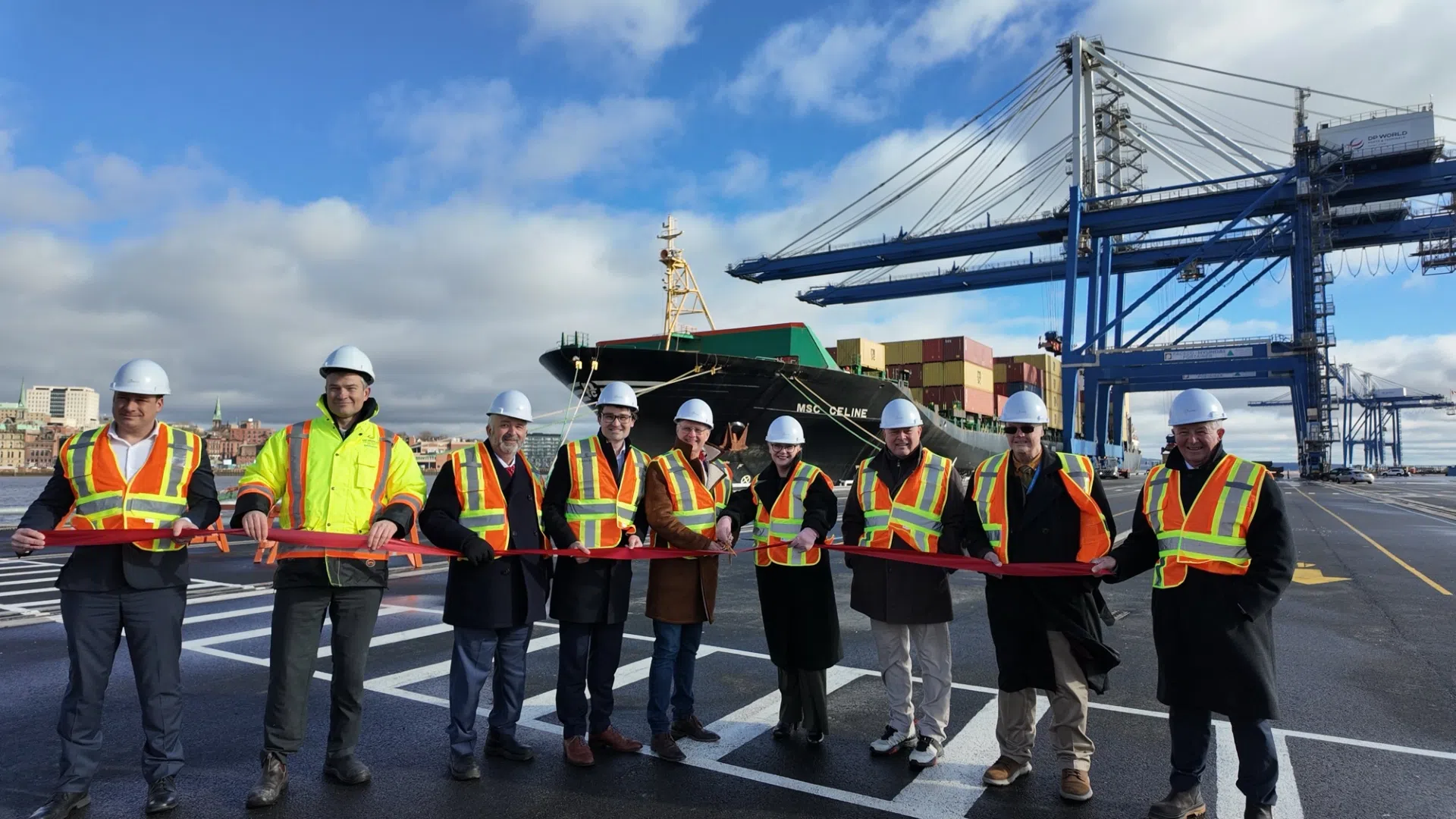The $205-million west side modernization project at Port Saint John has come to a close.
Officials gathered for a ribbon-cutting last Thursday to mark the completion of the years-long project.
Craig Bell Estabrooks, president and CEO of Port Saint John, said the work was finished on time and on budget.
“We had a great contractor in Pomerleau and all of the subcontractors that worked with them and we had a wonderful engineering team that worked through all of the challenges that COVID presented,” Bell Estabrooks said in an interview.
“We were prepared and ready to go, but we were also fortunate because we were living in the pre-inflationary world that we have today, so we were able to lock in very competitive unit costs and deliver a lot of those major packages in 2020 and 2021 on budget.”
The port’s president and CEO said work was “materially finished” nearly a year ago, in March 2023, but “lots of ins and outs” had to be completed after that.
Now that the upgrades are completed, the port’s container laydown capacity has more than doubled to 325,000 TEUs (ten-foot equivalent units).
Other improvements include a 345-meter berth, the addition of new refrigerated towers, dredging the main channel to be deeper and wider and an expanded intermodal yard.
Bell Estabrooks said they have already seen some benefits, including DP World adding two additional cranes at the port in 2023.
“The cranes arrived this time last year, they were commissioned last summer, and we’ve now been accepting two container ships simultaneously,” he said.
The port has already begun work on phase two of the project. The “enhanced modernization” project will see the two historic slipways filled in over the coming months.
Bell Estabrooks said once that work is completed by the spring of 2025, they will leap from a 325,000 TEU capacity to upwards of 800,000 TEUs.
In addition, the president and CEO said the port is actively working with its partners to see what smaller investments need to be made to keep the fluidity strong.
“Terminal capacity is great to state, but it really is based on the entire network. How well your rail is performing, how well your trucking is performing, all the inline KPIs that go towards how many containers you can handle successfully through a port,” he said.








